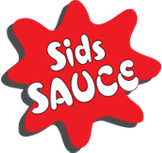Venison Loin With Hazelnut Coffee Maple Butter
Venison Loin With Hazelnut Coffee Maple Butter
With hints of coffee and hazelnut, this preparation is hard to beat. Venisot its best.
Ready in: 2 hours 15 minutes
Serves: 6
Complexity: very-easy
kcal: 557
Share
Ingredients
1 Venison Loin
3 garlic cloves
lots of SIDS SALT & PEPPER
1 tbsp cumin seed
butter
Hazelnut Coffee Maple Butter:--
¼ cup butter
1½ tbsp hazelnut coffee
1 tbsp Maple syrup
Directions
There are two steps to follow when cooking wild Venison:-
First: You need to make sure the meat is frozen for at least 3 weeks before you consume.
Second: According to the USDA, if you cook to medium like I do, make sure to hold your meat for at least 12 minutes at 60°C once completely cooked through. (Myhrvold, 2011) The possible dangers of cooking wild game shows why cooking the tenderloin sous vide is an appropriate method to maintain perfect moisture, flavour and achieve pasteurization.
Preheat immersion circulator, Sous Vide machine, or other Sous Vide set up to reach 60°C.
Take your Loin and generously cover with SIDS SALT & PEPPER and cumin seed. Thinly slice cloves of garlic and place on the loin.
Place in bag and vacuum seal or remove the air via the water displacement.
Place the bag in your water bath and set a timer for 2 hours. The time you need to cook the loin depends on its thickness. The Sousvide Supreme Cooking Guide is a handy quick reference for consulting cook times.
After the timer goes off, take the loin out of the bag, and pat dry with a paper towel.
Heat up your cast iron (or any pan) until it has an opportunity to get nice and hot, then add the fat of your choice, a medium-high heat fat is always a good idea, but butter can be used if you are cautious.
Sear all the edges of the venison loin for about 30 seconds a side until golden brown. Times will vary depending on heat of cooking fat.
Season with SIDS SALT & PEPPER and slice into medallions
Hazelnut Coffee Maple Butter: Pour cool Hazelnut coffee (you can substitute plain coffee), Maple Syrup and diced butter into a small food processor. Blend until thoroughly mixed.
With a rubber spatula scrape out butter mixture onto wax paper, roll into a cylinder and place in the refrigerator for 1 hour or longer.
Remove from the refrigerator and let it come to room temperature. Slice when serving.
History: Sous-vide cooking is characterized by low-temperature cooking, a longer period of cooking than conventional cooking, a container (such as a plastic bag) that separates the food from its heating environment, and pressurized enclosure using full or partial vacuum.
Low-temperature cooking was first described by Benjamin Thompson, Count Rumford in 1799. He used air as the heat-transfer medium in his experiments while attempting to see if he could roast meat in a machine which he had created to dry potatoes. In Thompson's own words, the meat was: "Not merely eatable, but perfectly done, and most singularly well-tasted."
Preparation of food under pressure, with or without heat, was developed by American and French engineers in the mid-1960s as an industrial food preservation method. As with Rumford, the researchers learned that the food showed distinctive improvements in flavour and texture. As this method was pioneered, applying pressure to food through vacuum sealing was sometimes called "cryovacking". The pressure notably concentrated the flavours of fruits, even without cooking.
The method was adopted by Georges Pralus, a French chef, in 1974 for the Restaurant Troisgros (of Pierre and Michel Troisgros) in Roanne, France. He discovered that when foie gras was cooked in this manner, it kept its original appearance, did not lose excess amounts of fat, and had better texture. Another pioneer in sous-vide is Bruno Goussault, chief scientist of Sterling, Virginia-based food manufacturer Cuisine Solutions, who further researched the effects of temperature on various foods and became well known for training top chefs in the method. He developed the parameters of cooking times and temperatures for various foods. Goussault and Pralus independently worked on development of sous vide in the 1970s and eventually became collaborators. It was Goussault who pioneered the marriage of vacuum sealing with low-temperature cooking. Pralus, considered the father of modern sous vide, cooked at higher temperatures.
